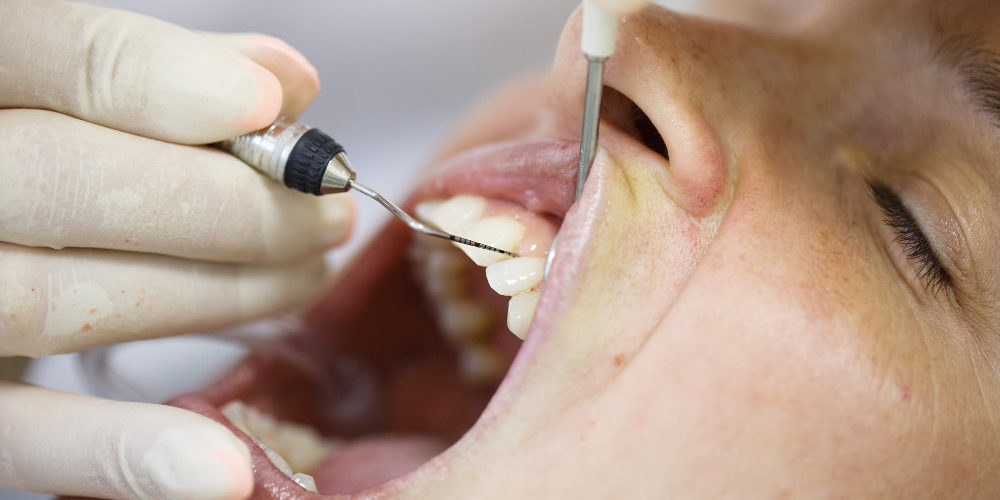Receding gums can be a minor annoyance leading to sensitive teeth. They can also be a serious loss of the supportive foundation of the teeth, leading to complete tooth loss. Understanding the various causes of receding gums can help you seek the necessary dental care to prevent and treat them.
What Causes Receding Gums?
Receding gums are a multifactorial problem with a relatively wide variety of causes. Most people with receding gums have a combination of contributing factors, so it is important to understand and address any potential cause.
Gum Disease
Many receding gums are a side effect of active periodontal disease. When bacteria collects under the gums in the form of soft plaque and hard tartar buildup, the body’s inflammatory response can begin to destroy the tissues that surround and support the teeth. This includes the bone, ligaments and gums around each tooth, and this chronic inflammatory destruction is the mechanism of gum disease.
Heavy Bite Forces
When teeth receive heavier than normal forces from the bite, those forces can damage the surrounding tissues. In general, this is most common with nighttime clenching and/or grinding (a condition known as bruxism). In a balanced bite, heavy forces can cause generalized gum recession. If an uneven bite, some teeth may suffer worse gum recession than others due to uneven pressure may.
Improper Orthodontic Treatment
In a healthy mouth, the roots of the teeth must be completely surrounded by a periodontal ligament connecting them to the jawbone, with gums covering the bone. In rare cases, orthodontic treatment may move a tooth or teeth too far in one direction so that there is not enough bone covering the roots.
This can also occur in rare cases when the teeth move too quickly.
Improper Brushing Techniques
While most people think this is the most common cause of receding gums, the truth is that it is a relatively unlikely cause. It is possible for bad brushing techniques to damage the gum tissues. We typically do not see the type of gum recession that would be associated with improper brushing techniques.
When this type of receding gums occurs, it will also include noticeable abrasion of the nearest tooth root. Again, while this is possible, it is not very common.
How Can I Prevent Receding Gums?
In order to prevent receding gums, you should work to address the four potential causes listed in the previous section.
Preventing Gum Disease
Preventing gum disease requires both great home care and consistent preventive dental visits. In order to be as proactive as possible, you should see your dentist a minimum of twice per year for professional teeth cleanings. Those with a high risk for gum disease may need to go more frequently.
You must also commit to great oral hygiene at home with twice daily brushing and nightly flossing to remove dental plaque consistently. Gum disease is preventable. It just takes some effort!
Preventing Heavy Forces
Most people cannot help whether they clench or grind their teeth during sleep. You can, however, protect against the damage it causes by wearing a custom-made dental nightguard. By separating the teeth with a perfectly fitting hard acrylic mouthguard, you can reduce the forces from grinding and redistribute them evenly among all the teeth. If you do clench or grind your teeth, your dentist will spot evidence of it.
Preventing Improper Orthodontic Movement
While you have little control of orthodontic tooth movement, you can prevent improper orthodontic movement by seeing a board-certified licensed orthodontist to straighten your teeth. You should avoid any unsupervised tooth movement, such as at-home aligner therapy or DIY hacks on the internet. Without a dentist’s supervision, you can easily damage the bone and gums surrounding the teeth with bad tooth movement.
Preventing Improper Brushing
Always use a soft-bristled toothbrush, and brush with gentle, circular motions. The bristles should lightly sweep plaque away from the edge of the gums. Do not use repeated back-and-forth motions. If you know that you tend to brush with a lot of force, switch your brush to your non-dominant hand.
An electric toothbrush can also help you brush properly, as the electric movements do the work for you. Your job is only to hold the bristles against the tooth surface.
How Can I Treat Receding Gums?
The treatment of receding gums is complicated. In most cases, you will need to work with a gum specialist (a periodontist) to develop a treatment plan that will first put a halt to the underlying causes of gum recession. Then your periodontist can walk you through the various treatment options.
Correcting gum recession is difficult work, and it involves surgical repositioning or replacement of the gum tissues. The severity of the receding gums and the location of the problem inside your mouth will determine which treatment is best to restore gum coverage to your teeth.
More Questions about Receding Gums?
Call Rockland Dental Specialists today to schedule a consultation with our periodontists. We can answer any question you have about receding gums and assess your current situation to provide valuable information and recommendations.







